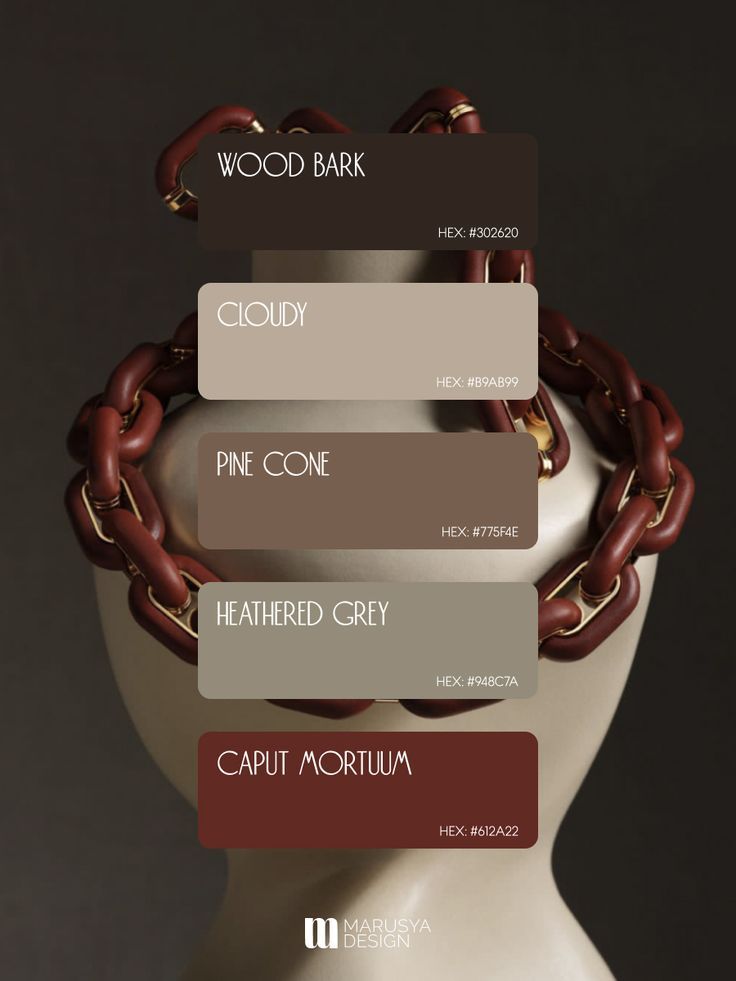The colors you choose for your brand do much more than decorate your logo—they help shape the way people feel about your business. Selecting the right color palette creates a strong, memorable identity and makes it easier for your audience to recognize and connect with your brand. By understanding a bit about color psychology and thinking carefully about your brand’s personality, you can make decisions that reflect what your business stands for.
Choosing the perfect palette might seem overwhelming at first, but it becomes simpler when you focus on your brand values and how you want to be perceived. With a little guidance, you can build a color scheme that works across all platforms, ensures consistency, and resonates with the people you want to reach.



Key Takeaways
- Color choices shape how people see your brand
- Matching colors to your brand’s personality is key
- Consistency matters for recognition and connection
Understanding the Role of Color in Branding
Color choices directly shape how your audience perceives your brand and can distinguish you in a crowded market. The right color palette serves both practical and psychological functions, guiding recognition, identity, and the emotional response customers have to your business.
The Impact of Color on Brand Recognition
Consistent use of a signature color palette boosts your brand’s visibility. Studies show that color increases brand recognition by up to 80%, making it much easier for customers to spot your company among competitors.
Logos, packaging, and websites that use a unified color scheme look more memorable. For example, red is strongly linked with Coca-Cola, and blue is often associated with brands like Facebook and IBM.
A well-chosen color palette builds trust by sending a clear and consistent message. Use your core colors across all marketing materials, social media, and website elements to maximize memorability and make your brand stand out.
How Color Influences Brand Identity
Color is a fundamental part of brand identity, shaping how your values and personality are communicated visually. The hues you select help tell your brand story and differentiate you from others.
For instance, green is often used to signal eco-friendliness or health, while black can represent luxury or sophistication. Your chosen colors should reflect your brand’s core message and resonate with your target audience.
Think about your company’s mission and the feelings or ideas you want people to associate with it. Matching these traits to suitable colors reinforces who you are and makes your brand identity clearer and more cohesive.
Emotional Associations with Color
Colors create instant psychological reactions that can encourage trust, excitement, calm, or urgency. This is where color psychology comes into play in branding.
For example:
| Color | Common Associations |
|---|---|
| Blue | Trust, calm, reliability |
| Yellow | Optimism, energy |
| Red | Excitement, passion |
| Green | Growth, balance |
| Black | Elegance, authority |
Understanding these emotional connections helps you select a palette that aligns with your brand’s intent. Choosing colors based on these principles can deepen your connection with customers and influence how they engage with your business.



Defining Your Brand Personality and Values
Understanding what your brand stands for is the first step in building a meaningful identity. The right color palette starts with a clear sense of your personality traits and how you want customers to feel when they interact with your brand.
Identifying Brand Personality Traits
Begin by listing the core qualities you want your brand to be known for. Ask yourself questions like: Is my brand playful or serious? Modern or traditional? Approachable or professional?
Use a table like the one below to organize your ideas:
| Trait | Description | Importance |
|---|---|---|
| Friendly | Warm, welcoming tone | High |
| Innovative | Focus on new ideas | Medium |
| Reliable | Consistent, dependable | High |
You can also look to your mission statement and values for clues. If you value sustainability, trust, or creativity, note these down.
Consider how your audience should perceive your brand and what makes you different from competitors. Jot down 3–5 main personality traits that will guide your color choices.
Translating Personality Into Color Choices
Once you have a list of personality traits, start connecting these qualities to colors that evoke similar feelings. Research basic color psychology to match moods with palette options—for example, blue often signals trust and professionalism, while yellow gives off a cheerful, optimistic vibe.
For each trait, list a few possible colors. For example:
- Friendly: Orange, light blue
- Sophisticated: Navy, gold
- Energetic: Red, bright green
Keep your industry in mind; certain sectors have standard color practices. Check what your competitors use, but don’t be afraid to stand out by picking shades that support your unique brand identity.
Test these colors in small combinations to see if they align with how you want your brand to be seen. Keep refining until you find a look that’s visually appealing and true to your values.



Exploring Color Psychology and Popular Colors
Color psychology explains why the colors you choose can change how people feel about your brand, shape their expectations, and influence decisions. Each color affects perception differently, and using the right shades can help you communicate trust, energy, friendliness, or sophistication.
Red, Blue, and Green in Branding
Red stands out as a powerful attention-grabber. You see it used by brands that want to evoke excitement, passion, or a sense of urgency. Fast food chains and clearance promotions often rely on red to stimulate appetite or action.
Blue is widely recognized as a symbol of trust, stability, and professionalism. Financial firms, tech companies, and healthcare providers frequently choose blue to make you feel secure and confident. Its cool tone can help create a calm and reliable brand image.
Green is linked to growth, health, and balance. Many eco-friendly brands and wellness companies use green in their palettes because it signals harmony with nature and a focus on well-being. In retail, green is also connected to freshness and can even encourage spending.
| Color | Common Associations | Industries Often Using It |
|---|---|---|
| Red | Energy, urgency | Food, retail, entertainment |
| Blue | Trust, calm, security | Finance, tech, healthcare |
| Green | Health, growth, nature | Eco, wellness, food |
The Effects of Yellow, Purple, Orange, and Pink
Yellow communicates optimism and cheerfulness. It’s often used by brands that want to appear energetic, friendly, or youthful. Too much yellow can cause visual fatigue, so use it as an accent to draw attention to key elements.
Purple conveys luxury, wisdom, and creativity. Cosmetic and high-end brands use it whenever the goal is to look sophisticated or imaginative. Lighter purples suggest calm and serenity, while deeper shades feel more regal.
Orange combines the energy of red with the optimism of yellow. It’s playful and enthusiastic, helping brands appear approachable and energetic. Orange is popular with tech startups and companies promoting adventure.
Pink is associated with softness, romance, and youth. Beauty, fashion, and brands targeting a younger audience frequently use pink for its warm and inviting tone. Pastel pinks feel calming, while bold pinks stand out and look modern.
| Color | Evokes | Best For |
|---|---|---|
| Yellow | Optimism, warmth | Youthful, creative brands |
| Purple | Luxury, creativity | Beauty, premium products |
| Orange | Energy, playfulness | Startups, outdoors |
| Pink | Softness, modernity | Fashion, youth, lifestyle |
Using Neutral Colors Effectively
Neutral colors—like black, white, gray, beige, and brown—offer versatility and balance. They act as a backdrop, letting bolder colors stand out without overwhelming visuals. White suggests simplicity and purity, while black creates a sense of elegance or sophistication.
Gray and beige can feel calm and timeless. Use them to create a stable foundation for your brand palette. Browns can add warmth or convey natural, earthy appeal, especially effective for eco-conscious or artisanal brands.
You can combine neutrals with vivid reds, blues, greens, or other hues to highlight important content and create a polished, cohesive identity. Adjust their usage based on the emotion or effect you want your brand to express.



Building Your Brand Color Palette
A successful brand color palette supports your identity, appeals to your audience, and helps ensure consistency across all visuals. Careful color selection and thoughtful combinations give your brand a unique and recognizable look.
Choosing a Primary Color
Your primary color acts as the anchor for your brand color palette. Start by considering what emotions or messages you want your brand to express. For example, blue often conveys trust and reliability, while red suggests energy and excitement.
Reference your mood board or brand vision for guidance. The primary color should align with your brand’s personality and stand out in your industry, while still feeling appropriate for your target audience.
Test your options in different contexts such as online, print, and merchandise to see how versatile your top choices are. Note how your color looks alongside white, black, and grayscale backgrounds, as you’ll be using it across various platforms.
A good primary color stands out, but it also provides a foundation for ease of use when building the rest of your color scheme.
Selecting Secondary and Accent Colors
Once your primary color is set, build your palette by choosing complementary secondary and accent colors. These play supporting roles in your brand color palette, adding depth and flexibility.
Select 2-4 secondary colors that harmonize with your primary shade. Use color theory principles, like the color wheel, to find shades that balance rather than overpower each other. For modern brands, subtle neutrals—such as grays or earthy tones—can help your primary stand out.
Accent colors provide interest and highlight important elements, such as call-to-action buttons or key messaging. They should be vibrant enough to catch the eye but used sparingly to avoid overwhelming your color combinations.
Test combinations by creating sample graphics or layouts. A balanced palette ensures your visual identity remains cohesive across different applications.
Creating Effective Color Combinations
Not every color combination will work well in every context. Use your mood board or inspiration images to assess how different colors interact. Pay attention to both harmony and contrast in your color schemes.
Aim for enough contrast between foreground and background for readability—especially with text and graphic elements. High-contrast pairings help with accessibility and keep your design clear.
A simple table can help you visualize color relationships:
| Role | Example Use | Recommended Count |
|---|---|---|
| Primary | Logo, headers | 1 |
| Secondary | Backgrounds, graphics | 2–4 |
| Accent | Buttons, highlights | 1–2 |
Adjust your palette as needed. Test these combinations with real brand assets before finalizing your choices to ensure everything feels cohesive and effective.



Ensuring Versatility and Accessibility
Creating an accessible color palette helps your brand reach everyone, including people with visual impairments. Prioritizing contrast and following standards not only improves usability but also strengthens your visual identity.
Testing for Contrast and Readability
Contrast ensures your colors work well together and are easy to read. Low contrast combinations, like light gray text on a white background, can make your content hard to understand for many users.
Use a contrast checker to evaluate your color choices. These tools let you compare different text and background pairings. Most recommend a minimum contrast ratio of 4.5:1 for body text, which you can check against the Web Content Accessibility Guidelines (WCAG).
Here’s a quick checklist:
- Test primary and secondary colors together
- Try different text sizes and font weights
- Review hover states, links, and call-to-action buttons
Prioritizing readability from the start keeps your brand inviting and easy to use.
Color Accessibility Standards
Accessibility standards like WCAG 2.1 guide your color decisions. The WCAG outlines specific requirements for color contrast and use, ensuring your palette remains readable for users with varying abilities.
For normal text, aim for a contrast ratio of at least 4.5:1. For large text (over 18pt), a ratio of 3:1 is acceptable.
Avoid using color as the only way to convey information. Combine color with icons, labels, or underlines for links.
Sticking to these guidelines helps make your visual identity both recognizable and inclusive. Regularly review your palette with up-to-date contrast checkers and update your colors if standards change.
Applying and Maintaining Your Color Palette
Sticking with your color palette through every touchpoint keeps your branding recognizable and professional. Effective use of color codes, proper application, consistency, and adapting to trends are all crucial.
Using Color Codes: HEX, RGB, and CMYK
Accurately representing your brand colors starts with knowing your codes. Each platform and medium needs specific color formats:
- HEX: Best for web and digital use.
- RGB: Used for screens, presentations, and anything digital.
- CMYK: Required for most printed materials.
Here’s a reference table:
| Use | Color Code Example | Format |
|---|---|---|
| Website & Apps | #4285F4 | HEX |
| Presentations & Digital Ads | rgb(66, 133, 244) | RGB |
| Brochures & Business Cards | cmyk(79, 40, 0, 4) | CMYK |
Record and organize your key brand colors in all three formats. This ensures accurate reproduction and consistency, no matter how or where your brand gets displayed.
Implementing Your Palette Across Marketing Materials
Keep your palette visible in all branded materials—online and offline. Logos, websites, social media graphics, business cards, packaging, and even signage should use your defined colors.
For digital materials, use your HEX and RGB codes. For print, always rely on CMYK for the most consistent results. When working with designers or printers, provide your color codes up front to avoid any guesswork.
Email templates, advertising banners, and presentations should also be checked for color accuracy. Test how colors appear on different devices and surfaces before rolling out key marketing materials.
Staying Consistent with Brand Guidelines
Document your color palette rules in a brand style guide. Specify exact HEX, RGB, and CMYK codes, main and accent colors, and how each shade should be used.
Here are some best practices:
- Set clear do’s and don’ts for color use in headlines, backgrounds, and accents.
- Supply examples of incorrect usage to prevent mistakes.
- Distribute your guide to designers, marketers, and anyone working with your branding.
Consistency helps strengthen brand recognition and maintains a professional look across every channel.
Adapting to Color Trends
While consistency matters, staying relevant means you sometimes need to adapt to changing color trends. Observe what’s popular in your market—like softer pastel shades or bold neons—and see if they fit your brand’s personality.
Introduce trend colors as accents or in temporary campaigns, not as permanent changes to core brand hues. When the trend fades, you can easily revert without confusing your audience.
Regularly review your palette and update marketing materials as needed for a fresh yet familiar brand presence. This careful approach supports both relevance and recognition.
- 3.8Kshares
- Facebook0
- Pinterest3.8K
- Twitter0
- Reddit0


